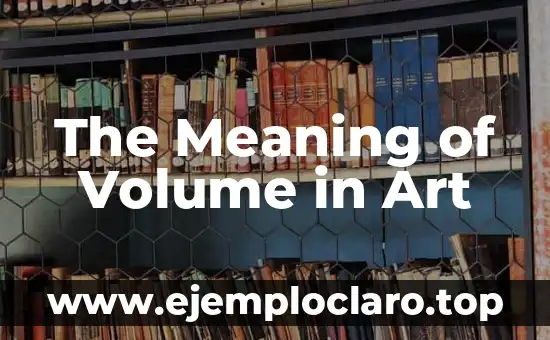Volume in art is a fundamental concept that refers to the three-dimensional quality of an object, giving it a sense of mass and space. This element is crucial as it transforms flat shapes into dynamic forms that engage the viewer’s perception of depth and structure.
What is Volume in the Context of Art?
Volume in art is the representation of three-dimensional objects on a two-dimensional surface. It is achieved through techniques like shading, perspective, and contouring. Historically, artists like Michelangelo mastered volume in sculpture, while painters such as Caravaggio used chiaroscuro to create depth.
The Illusion of Space in Artistic Works
Beyond the canvas, artists create the illusion of space through perspective and light. This technique, evident in Renaissance art, tricks the eye into seeing depth, enhancing the viewer’s immersive experience.
Examples of Artworks That Master Volume
Notable works include Leonardo da Vinci’s Mona Lisa, where subtle shading suggests volume, and Auguste Rodin’s The Thinker, a sculpture embodying mass and form. These pieces exemplify how volume adds life to art.
También te puede interesar

In the realm of body art, Oriental dragon tattoos hold a special place, symbolizing power, strength, and good fortune. These tattoos are not just decorative; they carry deep cultural and symbolic meanings, making them a popular choice for those seeking...

The Jägermeister emblem, a symbol rich in history and significance, has captivated many with its intricate design. This article delves into the deeper meaning of the Jägermeister logo, exploring its elements and the story they tell. By examining the emblem's...

The logo of Mexicana de Aviación, an iconic Mexican airline, holds a rich history and deep symbolism. This article explores the significance, design evolution, and cultural impact of this beloved emblem.

The Exploret logo is more than just a visual identity; it's a symbol that encapsulates the essence of exploration and discovery. By examining its elements, we can uncover the deeper meanings and historical context that make this logo unique.

Electronic commerce, commonly referred to as e-commerce, has revolutionized the way we conduct transactions. Within this digital realm, the concept of a purchase is central, representing the act of acquiring goods or services through online platforms. This article delves into...

The name Aolani, a beautiful Hawaiian name, holds a special place in Hawaiian culture. It is often given to girls and signifies heavenly mist or royal heavens. This name is not only aesthetically pleasing but also carries deep cultural and...
The Interplay of Volume and Light in Art
Light and shadow are key to conveying volume. Artists use highlights and shadows to suggest form, as seen in the dramatic effects of Baroque art. This interplay creates a sense of realism and emotional depth.
Techniques Artists Use to Create Volume
Artists employ several methods: shading, atmospheric perspective, overlapping, and relief. These techniques, used in various art forms, help in crafting the illusion of three-dimensional space.
The Role of Volume in Emotional Impact
Volume can evoke emotions by creating dynamic compositions. For instance, a sculpture’s mass might convey strength, while a painting’s depth can suggest introspection, engaging the viewer emotionally.
The Purpose of Volume in Different Art Forms
Volume serves various purposes across art forms. In sculpture, it explores the physical form, while in painting, it creates realistic scenes. This versatility highlights its importance in artistic expression.
Understanding Mass and Form in Art
Mass and form refer to the three-dimensional aspects of art. Sculptors like Henry Moore explored abstract forms, showing how mass can express emotions and ideas beyond representation.
Volume and Balance in Compositions
Balance in art often relies on volume. Symmetrical compositions, like those in architecture, use volume to create harmony, while asymmetrical ones might use it for dynamic tension.
Defining Volume in Art Theory
In art theory, volume is the spatial quality that gives objects a three-dimensional presence. It is a key element alongside line, shape, and color, essential for creating dynamic and engaging compositions.
The Origins of Volume in Art History
The concept of volume emerged in ancient Greek sculpture with the depiction of the human form. Renaissance artists later perfected its representation, laying the groundwork for modern and contemporary art.
Exploring Dimensionality in Art
Dimensionality combines length, width, and height, creating the illusion of space. Artists like Pablo Picasso fragmented objects to explore multiple perspectives, redefining volume in modern art.
How Do Artists Achieve Volume?
Artists achieve volume through techniques like modeling, where gradual transitions of light and dark create form. Sculptors use materials to craft three-dimensional objects, while painters use perspective and shading.
Using Volume in Art – Practical Examples
When painting, start with a sketch, then add layers of shading. For sculpture, model forms in clay, emphasizing mass. These steps help artists effectively incorporate volume into their work.
INDICE

